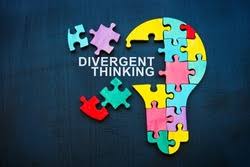Representation Matters and here is why!
The publishing industry has a long history of using insensitive imagery in illustrations and these images have historical roots in the limited and offensive collection that frame people’s imagination of an African American as savage, ignorant, illiterate, and inferior (Tyree & Jacobs, 2014). It has been noted that in the early 1970’s most children's literature presented an explicit message: African American children are not regarded in the publishing industry, and books have little to offer them in terms of representation. Further, the publishing industry has received criticism over the years because of the marginalization or minimization of minority roles of traditional orthodox characters. One specific publishing company (i.e., Fountas & Pinnell) was found to have reading curriculum displaying African Americans as subordinate, deviant, and weak compared to Whites who were viewed as superheroes, innovative, exceptional, and prosperous (Thomas & Dyches, 2019).
This is further supported by the lack of authentic stories of superheroes with reading powers in African American children’s literature. The Cooperative Children’s Book Center’s (2018) 2017 Multicultural Statistics report highlighted that, out of approximately 3,700 books examined, only 340 were of African or African American content/characters and only 100 were by African American author(s) and/or illustrators, suggesting books considered as having diverse content potentially lack realistic and authentic content. This small share of African American authorship or illustrators highlights why representation in graphic novels matters in terms of culturally responsive illustrations for African American boys with reading disabilities. Given the Cooperative Children’s Book Center statistics, there is a need for illustrations in books or media to convey positive messages, which could build sense of self, tie to background knowledge, to increase comprehension, and bring about a sense of belonging and recognition for African American boys.
Thus, African American superhero themed graphic novels or media (i.e., film) are necessary now more than ever because schools are becoming overwhelmingly diverse. For instance, the clip of Rubberband Man from Static Shock shows that even talented African American students need effective reading instruction.
If Rubberman had received good instruction from the beginning, he would have become a confident reader along with his other superpowers. He didn’t see himself reflected in material that would have supported him as a reader, so he developed the skills he had in areas that did allow him to see himself reflected, for example, in context to other African American musicians.



Comments
Post a Comment